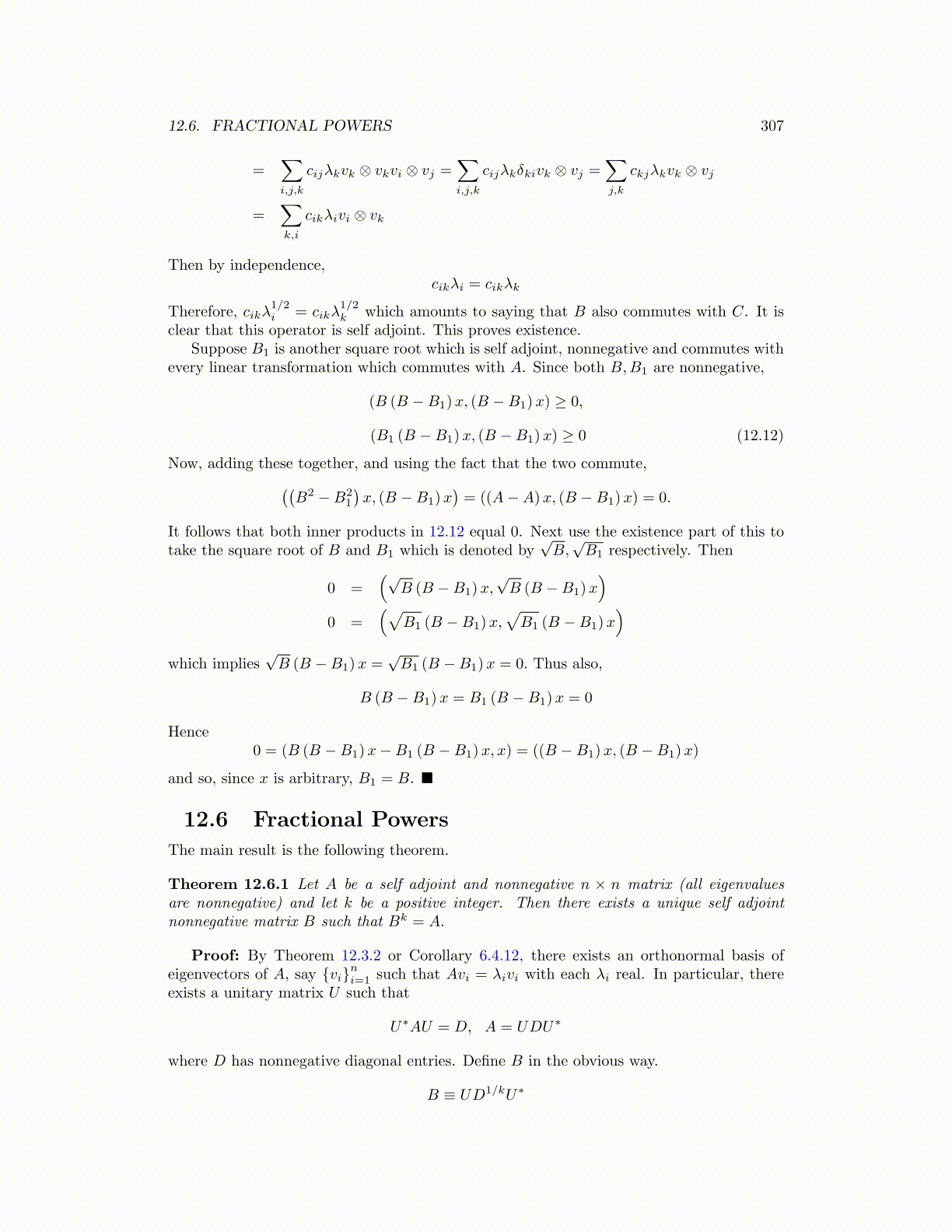
12.6. FRACTIONAL POWERS 307
=∑i,j,k
cijλkvk ⊗ vkvi ⊗ vj =∑i,j,k
cijλkδkivk ⊗ vj =∑j,k
ckjλkvk ⊗ vj
=∑k,i
cikλivi ⊗ vk
Then by independence,cikλi = cikλk
Therefore, cikλ1/2i = cikλ
1/2k which amounts to saying that B also commutes with C. It is
clear that this operator is self adjoint. This proves existence.Suppose B1 is another square root which is self adjoint, nonnegative and commutes with
every linear transformation which commutes with A. Since both B,B1 are nonnegative,
(B (B −B1)x, (B −B1)x) ≥ 0,
(B1 (B −B1)x, (B −B1)x) ≥ 0 (12.12)
Now, adding these together, and using the fact that the two commute,((B2 −B2
1
)x, (B −B1)x
)= ((A−A)x, (B −B1)x) = 0.
It follows that both inner products in 12.12 equal 0. Next use the existence part of this totake the square root of B and B1 which is denoted by
√B,
√B1 respectively. Then
0 =(√
B (B −B1)x,√B (B −B1)x
)0 =
(√B1 (B −B1)x,
√B1 (B −B1)x
)which implies
√B (B −B1)x =
√B1 (B −B1)x = 0. Thus also,
B (B −B1)x = B1 (B −B1)x = 0
Hence0 = (B (B −B1)x−B1 (B −B1)x, x) = ((B −B1)x, (B −B1)x)
and so, since x is arbitrary, B1 = B. ■
12.6 Fractional Powers
The main result is the following theorem.
Theorem 12.6.1 Let A be a self adjoint and nonnegative n × n matrix (all eigenvaluesare nonnegative) and let k be a positive integer. Then there exists a unique self adjointnonnegative matrix B such that Bk = A.
Proof: By Theorem 12.3.2 or Corollary 6.4.12, there exists an orthonormal basis ofeigenvectors of A, say {vi}ni=1 such that Avi = λivi with each λi real. In particular, thereexists a unitary matrix U such that
U∗AU = D, A = UDU∗
where D has nonnegative diagonal entries. Define B in the obvious way.
B ≡ UD1/kU∗